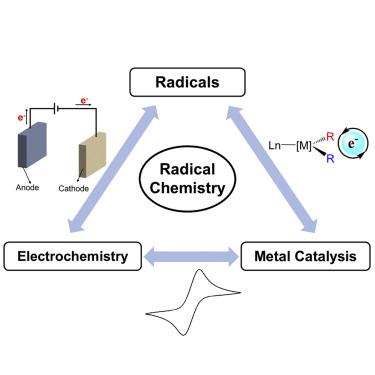iScience ( IF 4.6 ) Pub Date : 2020-11-11 , DOI: 10.1016/j.isci.2020.101796 Jiaqing Lu 1, 2 , Yukang Wang 1, 2 , Terry McCallum 3 , Niankai Fu 1, 2

|
The merger of transition metal catalysis and electroorganic synthesis has recently emerged as a versatile platform for the development of highly enabling radical reactions in a sustainable fashion. Electrochemistry provides access to highly reactive radical species under extremely mild reaction conditions from abundant native functionalities. Transition metal catalysts can be used as redox-active electrocatalysts to shuttle electrons, chiral information to organic substrates, and the reactive intermediates in the electrolytic systems. The combination of these strategies in this mechanistic paradigm thus makes the generation and utilization of radical species in a chemoselective manner and allows further application to more synthetically attractive enantioselective radical transformations. This perspective discusses key advances over the past few years in the field of electrochemical transition metal catalysis and demonstrates how the unique features of this strategy permit challenging or previously elusive transformations via radical pathways to be successfully achieved.
中文翻译:

通过电化学过渡金属催化利用自由基化学
过渡金属催化和有机电合成的合并最近已成为以可持续方式开发高度可行的自由基反应的多功能平台。电化学提供了在极其温和的反应条件下从丰富的天然官能团获得高反应性自由基物质的途径。过渡金属催化剂可用作氧化还原活性电催化剂,以将电子、手性信息传递至有机底物以及电解系统中的反应中间体。因此,在这种机械范式中这些策略的组合使得自由基物种以化学选择性的方式产生和利用,并允许进一步应用于更具综合吸引力的对映选择性自由基转化。该观点讨论了过去几年电化学过渡金属催化领域的关键进展,并展示了该策略的独特特征如何通过激进途径成功实现具有挑战性或以前难以捉摸的转化。











































 京公网安备 11010802027423号
京公网安备 11010802027423号